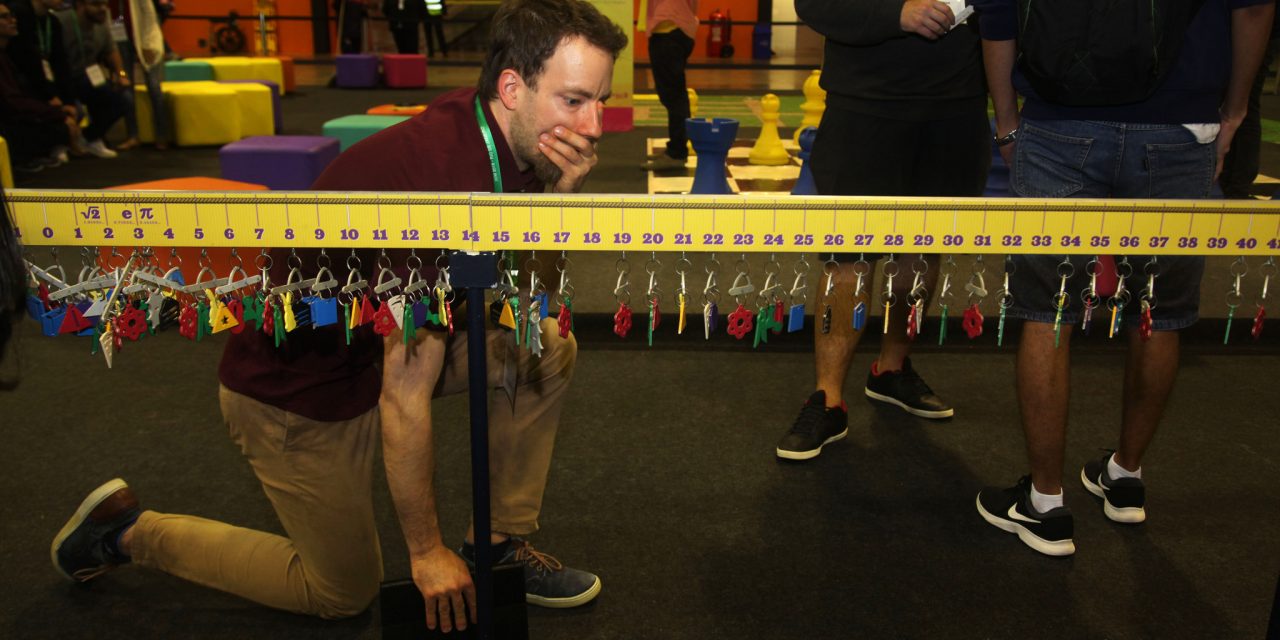August 2, 2018, 8:26 am

The target audience may have been children, but that didn’t stop a group of four adult men from picking up the brightly-coloured tetris cushions and trying to build with them. There are just seven pieces, but it’s possible to make as many as 240 different shapes from them said the instructors standing nearby. Under the watchful eye of the play area’s monitors, the men – four research scholars at the Indian Institutes of Technology – pushed the corners of the 3D tetris set together for ten minutes. The shape they tried to construct was on a piece of paper pinned up behind them, and even their instructor seemed to have difficulty.
But, they were full of praise for the game. “It’s nothing but a math calculation,” says Nirupam Ghosh, one of the four scholars. “But it’s very good for children, it helps them to think in different ways.” The 3D tetris cushions are one of eight games in the play station. Monitors hope to welcome more children and teenagers tomorrow when more than 500 medal winners of the Brazilian Math Olympiad for Public Schools visit ICM 2018. Next to the tetris, there were more groups of adults playing chess on a life-sized board with metre-high pieces. Yet another group laughed nearby as one used a square-wheeled bicycle which, in its journey over a ridged platform, is an exercise in understanding circumference.
Read more:
The games, present at the International Congress of Mathematicians (ICM) with the help of the Federation of Industries of Rio de Janeiro State (FIRJAN), are designed to help young people engage with mathematics. By including tactile elements within the learning process and gamifying learning, the exercises introduce an element of play to the learning process aimed at bolstering engagement and increasing math interest among children and adolescents.
Another ICM stand showcased free computer games that can be played online, with basic levels for children just beginning to count, and more advanced activities for mathematics professors. The games were available in English, Portuguese, Chinese and other language. Brightly colored interactive games such as ‘Deepest Ocean’ and ‘Pyramid Panic’ attract younger children, while adults gravitate towards the games which present plainer visual displays involving complex calculations.
Nearby, a yellow box sat on a table, with three cogs corresponding to lights and a winding handle on the side. Children – or in today’s case, adults – can select three variables and generate a formula using the machine. “Imagine that it’s a machine,” explains Alifer Salis, a 20-year-old applied mathematics student at the Getulio Vargas Foundation. “This shows you the process that generates the outcome.” The takeaway for many of the monitor’s demonstrating and explaining the games, however, is that mathematics can be a game for any age.